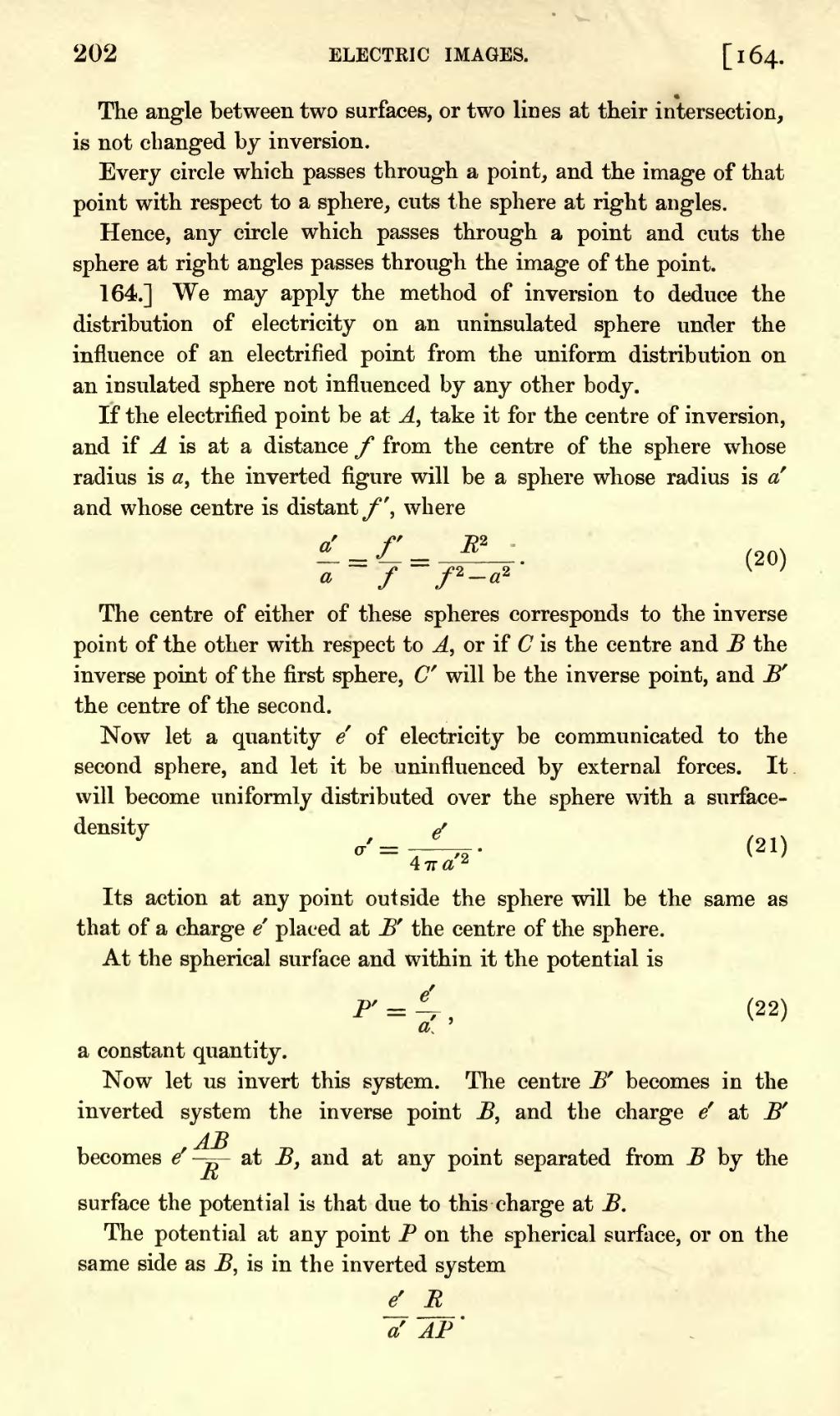The angle between two surfaces, or two lines at their intersection, is not changed by inversion.
Every circle which passes through a point, and the image of that point with respect to a sphere, cuts the sphere at right angles.
Hence, any circle which passes through a point and cuts the sphere at right angles passes through the image of the point.
164.] We may apply the method of inversion to deduce the distribution of electricity on an uninsulated sphere under the influence of an electrified point from the uniform distribution on an insulated sphere not influenced by any other body.
If the electrified point be at , take it for the centre of inversion, and if is at a distance from the centre of the sphere whose radius is , the inverted figure will be a sphere whose radius is and whose centre is distant , where
| (20) |
The centre of either of these spheres corresponds to the inverse point of the other with respect to , or if is the centre and the inverse point of the first sphere, will be the inverse point, and the centre of the second.
Now let a quantity of electricity be communicated to the second sphere, and let it be uninfluenced by external forces. It will become uniformly distributed over the sphere with a surface-density
| (21) |
Its action at any point outside the sphere will be the same as that of a charge placed at the centre of the sphere.
At the spherical surface and within it the potential is
| (22) |
a constant quantity.
Now let us invert this system. The centre becomes in the inverted system the inverse point , and the charge at becomes at , and at any point separated from by the surface the potential is that due to this charge at .
The potential at any point on the spherical surface, or on the same side as , is in the inverted system
















